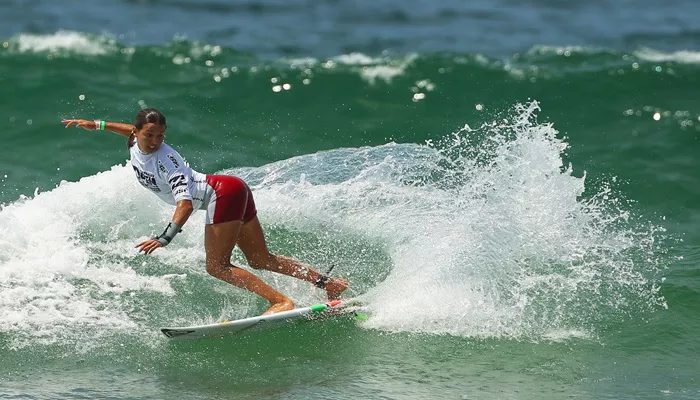Wave windsurfing, the dynamic fusion of surfing and sailing, is the ultimate test of ocean skill. Mastery demands more than strength—it requires timing, balance, and intimate knowledge of waves and wind. The raw intensity of slicing through a breaking swell, launching off a lip, or carving a powerful bottom turn defines the essence of this extreme sport. For enthusiasts seeking to deepen their windsurfing experience, refining key techniques is essential. This guide presents eight expertly curated tips designed to help intermediate to advanced riders navigate wave terrain with confidence, precision, and safety. Whether you’re chasing high-wind days or glassy breaks, these insights will transform how you engage with the ocean.
The 8 Best Tips for Wave Windsurfing
1. Choose the Right Spot
Not all wave spots are created equal. Selecting the appropriate location dramatically influences performance and safety. Beginners and intermediates should start with side-shore conditions and moderate swells. Avoid heavy shore breaks or reef breaks until more advanced. Research tide behavior, wind direction, and wave patterns. Use local knowledge or surf forecasts to anticipate shifts. Consistency in conditions will allow you to focus on progression rather than survival. When traveling, scout from the beach, noting hazards such as rocks or currents. A well-chosen spot becomes a training ground, not a battlefield.
2. Tune Your Equipment for Waves
Wave sailing requires specific gear configuration. Use wave boards with higher rocker for maneuverability. Opt for smaller sails, ideally between 3.5 to 5.7 square meters, allowing better control in gusty surf conditions. Adjust mast base position to favor balance over speed. Fin setup matters—single fins offer drive, while multi-fin setups enhance grip during aggressive turns. Keep your quiver lean but versatile. Prioritize durability: waves punish gear. Always double-check harness lines, battens, and downhaul before paddling out. Invest in a reliable wetsuit and proper footstraps for improved connection to the board.
3. Learn to Read the Wave
Reading a wave is a skill honed over time. Start by observing swell angle, wave period, and how each set breaks. Look for consistent peaks rather than random closeouts. Anticipate when to initiate your bottom turn—too early, and you lose speed; too late, and you miss the lip. Ride the shoulder for longer, more controlled maneuvers. Understanding wave tempo lets you choose whether to hit the lip, air out, or pull back. Avoid paddling into sections that crumble early or reform unpredictably. Visual discipline helps conserve energy and maximize ride length.
4. Master the Bottom Turn
The bottom turn is the cornerstone of wave windsurfing. It sets up every move that follows. Keep your weight low and centered over the board. Drive through your back foot while applying pressure on the inside rail. Look up toward the lip as you commit to the arc. Keep sail power engaged without overpowering. A good bottom turn gives speed, control, and line adjustment. Practice different turn angles—tight for hitting the lip, wide for slashes or aerials. Mistimed turns disrupt flow and compromise safety. Perfect this maneuver on smaller waves before scaling up.
5. Nail the Top Turn
The top turn, where board meets wave crest, defines style and aggression. Approach with controlled speed. As you reach the lip, shift weight forward and pivot the board sharply. Keep the rig open to reduce drag. Extend your front arm and rotate your torso for a full, committed motion. Spot your landing early to avoid being caught off-balance. Top turns vary by wave shape—on soft sections, carve; on steep lips, snap hard. Fluid transitions from bottom to top maximize ride efficiency and aesthetics. Practicing these turns under varied conditions builds muscle memory and finesse.
6. Use the Wind Efficiently
Harnessing wind correctly ensures smooth transitions and powerful moves. In side-shore winds, position yourself upwind before initiating a ride. Stay sheeted in while pumping down the face. Feather your sail during turns to avoid overpowering.
Onshore conditions demand tighter coordination between board and rig. React to gusts with subtle body shifts rather than aggressive sail movements. Control, not brute force, dictates flow. Understanding sail trim in variable winds separates advanced riders from beginners. Practicing in cross-offshore conditions teaches subtle sail handling. Over time, intuitive wind use allows seamless flow across sections.
7. Improve Jumping and Aerials
Wave windsurfing often involves air time. Learn to launch off the wave face—not the whitewater—for clean lift. Time your jump as the wave steepens. Compress before takeoff, then extend upward. Keep the nose slightly angled into the wind. Spot your landing zone mid-air and prepare for touchdown. Bend knees on impact to absorb shock. For forward loops or back loops, commit fully. Half-hearted attempts cause crashes. Aerial maneuvers demand timing, wind awareness, and courage. Use smaller ramps first before progressing to larger sets. Controlled landings reduce injury risk and boost confidence.
8. Respect Ocean Safety
Windsurfing in waves is inherently risky. Always assess swell size, wind speed, and local hazards. Never go out alone. Wear an impact vest or flotation device for added security. Learn self-rescue techniques like uphauling in chop or body dragging in broken gear situations. Keep a knife accessible for entanglements. Stay alert to changing weather or shifting tides. Avoid overconfidence—nature dominates the lineup. Recognize your limits and retreat if conditions turn dangerous. Safety builds longevity in your windsurfing experience. Respect the sea, and it rewards with unforgettable rides.
Conclusion
Wave windsurfing offers unmatched adrenaline, creativity, and freedom. Mastery comes through repetition, patience, and attention to detail. These eight tips serve as a foundation for growth, equipping you to handle varying wave conditions with confidence and control. Choose your spot wisely. Tune your gear meticulously. Read each wave like a story. From bottom turns to aerials, each movement connects you more deeply to the rhythm of the ocean. Above all, ride with respect—for the environment, fellow surfers, and yourself. Your windsurfing journey is not just about skill, but about cultivating a relationship with nature’s most powerful element.

